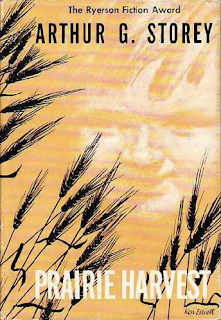List 75: Canadian Literature
Vancouver: William Hoffer, Bookseller, [1989?]
In spite of his obvious weirdness I found myself liking him. When he launched into a diatribe, which he did often, he would become intoxicated by his own rhetoric, then leap up bellowing and, like an actor, pace the store as though it were the stage of a theatre. He was, perhaps, the first person I ever met whose voice merited the word stentorian.
– David Mason, The Pope's Bookbinder
How did I come to have this? A response to an advert in
Books in Canada, perhaps. When it landed at my Montreal flat, sometime around the death of Doug Harvey, this catalogue was like nothing I'd ever seen. The bookseller seemed to be daring customers to purchase.
From the introduction:
There isn't very much Canadian literature, and most of it is garbage. It is the junk literature of a junk age. It is beneath those who care about anything.
The attacks begin with item #6, Margaret Atwood's
Second Words: Selected Critical Prose (Anansi, 1982):
Having spent considerable time wandering 2nd hand bookshops, it recently occurred to me that the only people ever overheard congratulating or recommending this author are teen-aged girls of the least promising variety. Our animosity is, in this case, genuine. The more quickly this author is forgotten the better it will be for Canada. In the meantime we are optimistic in regard to selling our stock of copies to unpromising customers, Any regular customer who orders it may expect to be dropped from the mailing list.
I was not a regular customer; in fact, I never bought a book from William Hoffer. Spoiled terribly by Montreal's low book prices and the indifference paid things Canadian in New York, I found his prices high. Here Hoffer asks $75 for the Canadian first of Brian Moore's
The Emperor of Ice-Cream (McClelland & Stewart, 1965), a book I'd bought for $2 in a Sherbrooke Street bookstore not three years earlier. I was lucky; another store had it for six.
He titled one of his catalogues
Cheap Sons of Bitches.
My plea was poverty, but I still feel bad for having given nothing in return for this catalogue. Twenty-four or so years later, it continues to inform and entertain.
Cold eye or not, Hoffer knew Canadian literature far better than most other booksellers. Today, when my queries concerning Bertrand W. Sinclair are met with a blank stare, I consider this entry:
By 1994, the year I moved to Vancouver, William Hoffer was gone. He'd closed up shop, sold his stock, and was living in Moscow with a wife, two teenaged stepsons, and a growing collection of handmade toys. When he returned to BC, it was to be treated for the cancer that killed him. It's probably just as well that we never met. In his very fine memoir,
The Pope's Bookbinder (Biblioasis, 2013), David Mason portrays Hoffer as a man of contradictions, about whom people held conflicting opinions. It only follows.
To Mason, Hoffer delighted in sowing the seeds of strife; he decimated the conviviality that had once existed within the bookselling community, very nearly destroying the Antiquarian Booksellers Association of Canada in the process. Hoffer comes off as being as brilliant as he was demented. Yet, like me, Mason returns to Hoffer's catalogues.
"You would be the only bookseller I ever met who purported to despise the only area you know anything about," he once wrote Hoffer.
I think "purported" is the key word.
Related post:























































